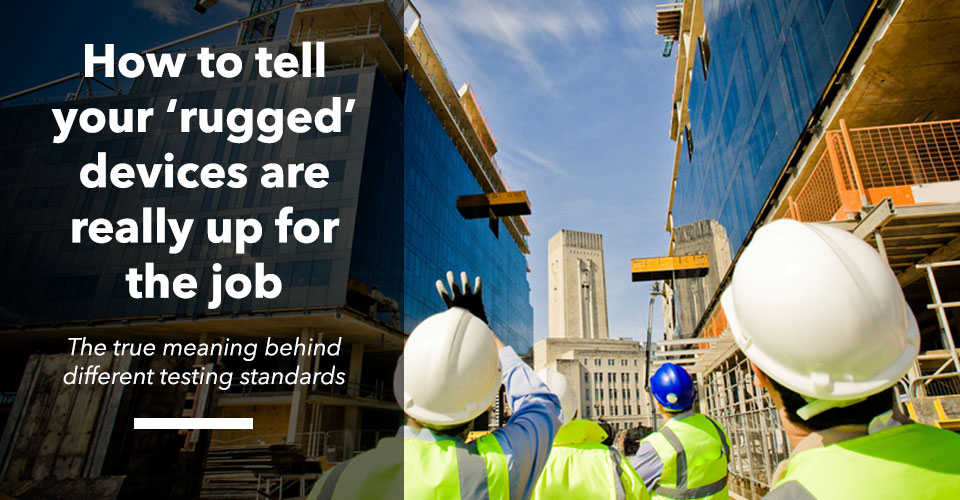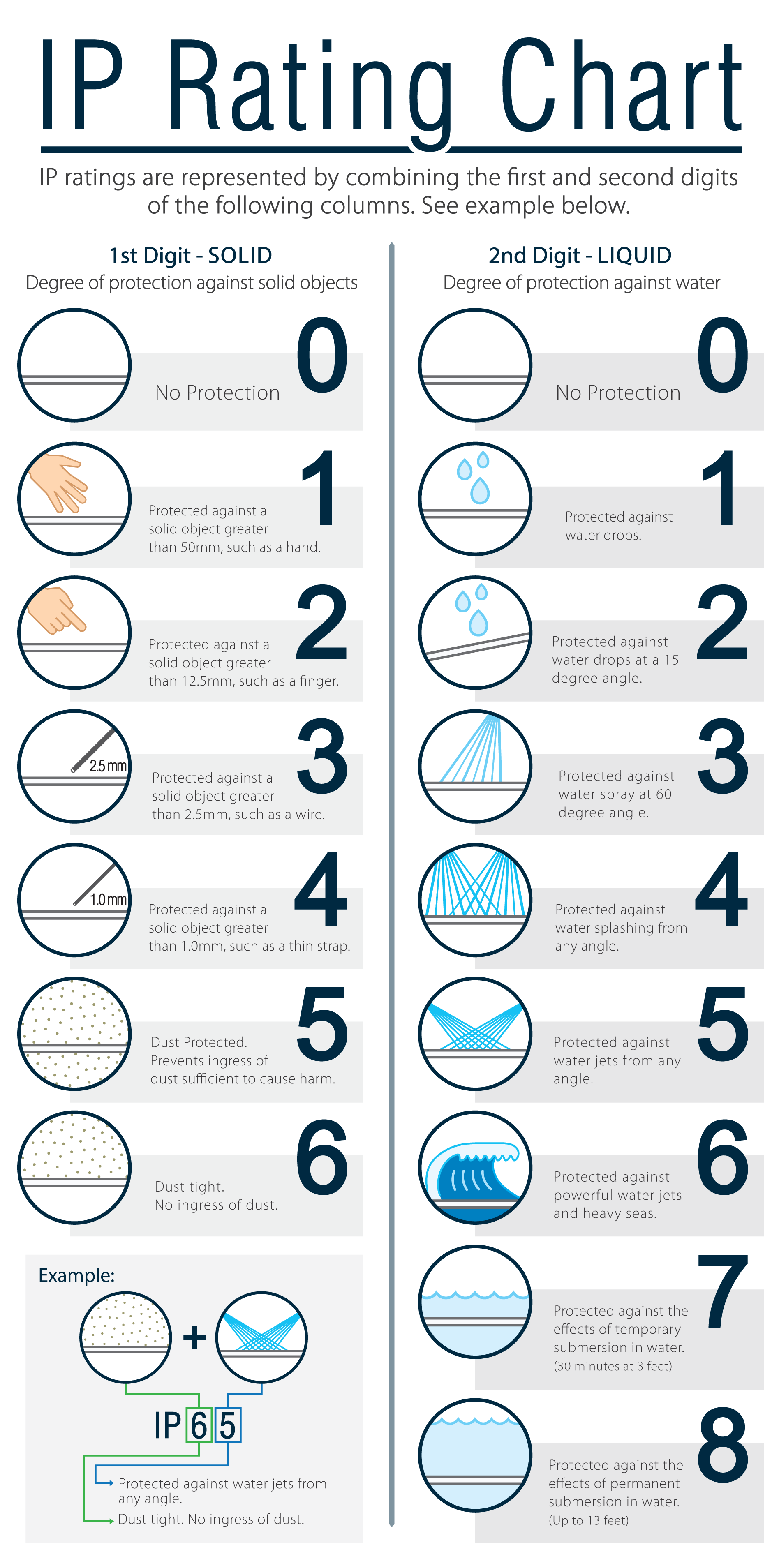
You’ve got a workforce that operates outside the traditional office space – maybe in transportation and logistics, in a warehouse or cool store, in field service, in construction or manufacturing. They need IT equipment and it needs to be tough.
So you look for equipment that is ruggedised, waterproof, dustproof, and meets the ultimate in toughness – military standards. Right?
Well, yes – but that’s not the full story.
The terms ‘rugged’, ‘waterproof’ and ‘military certified’ sound impressive, but the important thing to understand is that they are general terms, and cover a very wide range of different levels of protection and operability.
Having worked with enterprise grade rugged devices for years, I’ve found that many organisations are not aware of the different levels of standards and testing. Here’s what I share with them to help them select exactly the right equipment for their workers’ needs.
The two key standards
There are two main categories of standards when it comes to tough devices: Ingress Protection (IP Rating) and Military Testing Standards (MIL-STD-810G).
IP Ratings explained

Ingress protection is a rating that defines the level of protection that a piece of equipment has from dust and water. The higher the IP rating, the higher the protection.
An IP rating consists of two digits, where the first rates protection against solids (dust and other particles) and the second rates protection from liquids. For example:
IP54 means that the item is protected from an amount of dust that would interfere with its operation (rating 5) and that it is splash-proof (rating 4).
IP65 means that it is dust-tight (rating 6) and safe against water jets (rating 5).
IP68 (the highest rating level) means total dust protection and the ability to withstand total submersion in water.
Beware of vague terms – like ‘waterproof’
So you can see that when a consumer device says that it is ‘waterproof’, you really need to be asking more detailed questions to find out exactly what level of exposure to water, and for how long, it will withstand.
MIL-STD-810G explained
The second standard it’s worth knowing more detail about is the MIL-STD-810G certifications. As the name implies, these were designed by the US military to test its equipment limits under various environmental conditions before deploying it in the toughest of frontline environments. It has now expanded to become a global standard, not only for military, but commercial deployments. MIL-STD-810G includes 29 standards with extensive test specifications including drop/shock, rain, vibration, altitude/pressure, sand and dust resistance, humidity, high/low temperature and temperature shock.
What you need to know about MIL-STD-810G
Here are the important questions to ask about the hardware when it’s presented as MIL-SPEC certified.
1. Which of the 29 standards has the equipment been tested for? It may be drop but not temperature, or temperature but not altitude. You’ll want to be sure you have equipment that has been tested for the conditions that your workers find themselves in.
2. To what level has the equipment been tested? For example, a drop of 70cm or 2m, temperatures down to zero or minus 20 degrees?
3. How many times was the equipment tested? Was it dropped 200 times or 2000 times?
4. Were all the tests carried out on a single piece of equipment? Some manufacturers will drop test one unit, then temperature test another, rather than use a single device for all certifications.
5. Most importantly - if a piece of equipment has been tested for even just one of these standards and to the lowest specification, the manufacturer can state that it is MIL-STD-810G certified.
Reading that a device is ‘waterproof and meets MIL-STD-810G’ certainly sounds impressive – but as the above shows, it’s not enough in itself. It’s important to dig deeper and ask specific questions.
Other considerations
As well as IP Ratings and MIL-STD-810G, there are some other things to consider when looking for hardware to be used out in the field; including battery life, replaceable batteries, sunlight viewable displays, touchscreen technology with glove and rain modes, and the lifecycle of the device to ensure longevity of the docking and vehicle mounting solutions installed. My colleague George Piesnik has described these in his article ‘Tough Love – 5 things to look for in a truly ruggedised device’ – take a look for more detail.
Isn’t rugged computing expensive?
If equipping your workforce with a device that is truly ruggedised sounds very expensive – think again. The gap is closing between consumer and enterprise grade hardware, and there’s an important conversation to be had around the difference in Total Cost of Ownership.
IT continues to move out of the office and into just about every conceivable outside environment, driving demand for tougher equipment – so it’s worth making sure you know just what you’re getting in your ‘rugged’ device.
Want to know more?
Fleur Tytheridge is a Rugged Mobile Computing specialist with Sektor Distributors.
For more information, please connect with Fleur through LinkedIn, email fleurt@sektor.co.nz, or speak to her on 021 764 513.
